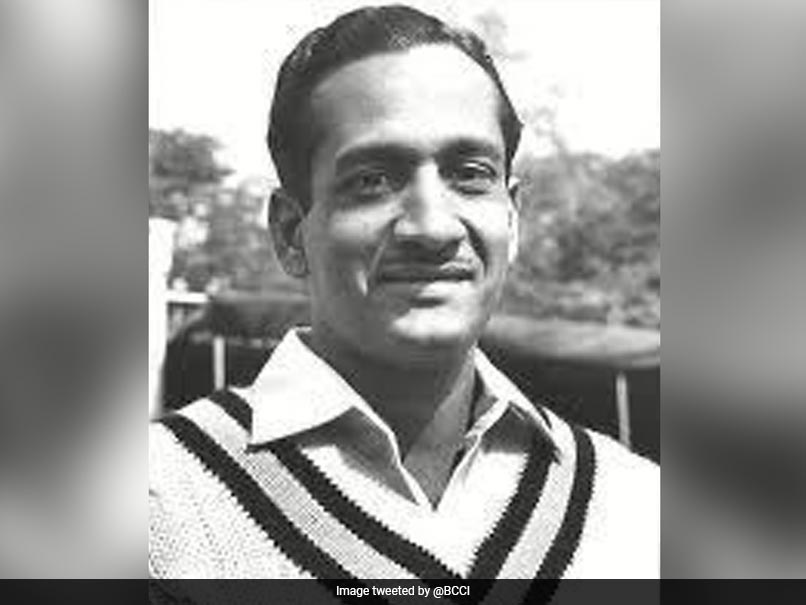
New Delhi:
An accidental Indian captain who matched the peerless Vijay Hazare stroke for stroke with a cover drive to die for, Dattajirao Gaekwad should have played more than 11 Tests, given the talent this remarkable player from Baroda possessed. On Tuesday, Gaekwad died in his hometown Baroda at the age of 95. Statistically, he was the oldest living Indian Test cricketer since the death of Deepak Shodhan in 2016. A nightmare for the Bombay (Mumbai) teams of the 1950s, those cover drives, unfortunately, never really came off when he played at the highest level from 1952 to 1961.
His son Anshuman, who played 40 Tests from the 1970s to the 80s, was more successful with a tight defensive technique compared to his father.
But in those first two and half decades post independence, not every cricketer could always be judged by the prism of statistics.
A Test average of less than 20 spread across nine years came at a time when the national team was losing more than winning.
He also led India in four of the five Tests during their disastrous tour of England in 1959.
For the naysayers, his elevation smacked of nepotism as he was perceived to be close to Fatehsinh Gaekwad, the erstwhile Maharaja of Vadodara, who was the manager of the national team and also his patron since he was 11 years old.
Wisden, still considered the holy grail of cricket, wasn’t exactly charitable about his leadership, documenting that his captaincy “lacked verve and personality” while summing up the series.
In an interview, he had once recalled that his first call-up to the national team seemed too good to be true, and he would always wear the cap and blazer in his room.
Those were the days when the touring teams, apart from four or five Tests, would also play at least 25 to 30 first class games, and Dattaji did fairly well against the county sides.
However, when it came to handling the legendary Freddie Trueman’s pace on uncovered damp pitches, or Alec Bedser’s swing, it became a bit too much for him.
The solace was that none other than the best British cricket writer of that generation, Christopher Martin-Jenkins, termed his cover drives “delightfully crisp”.
Closer home, when he played for Baroda, he was in a league of his own. He was one of the biggest architects of his side’s maiden Ranji Trophy title in 1957-58 with a hundred against Services, which had India pacer Surendranath in the ranks.
But then Dattaji, despite some of his fabulous domestic performances, would always be overshadowed by Hazare, perhaps the best Indian batter in the 50s.
If Dattaji scored a hundred in that Ranji final, Hazare got a double hundred. In the semi-final against Holkar, Dattaji scored a match-winning 145.
He was a nightmare for the Bombay teams in the 50s and once smashed a double hundred but it was Hazare’s 126 that was remembered more by old timers.
The right-hander made his debut against England at Leeds in 1952 and his final international game was against Pakistan in Chennai in 1961.
In the Ranji Trophy, Gaekwad represented Baroda from 1947 to 1961. He scored 3139 runs at an average of 47.56, including 14 hundreds.
His highest was a 249 not out against Maharashtra in the 1959-60 season.
He became India’s oldest living Test cricketer in 2016 after the death of former batter Shodhan at the age of 87 in Ahmedabad.
Being the eternal bridesmaid was Dattaji’s destiny. The 1958 Ranji season did see him get a recall for the fifth and final Test against the West Indies at Feroz Shah Kotla, where he enjoyed his finest hour for India with a career-best score of 52 against the deadly duo of Wes Hall and Roy Gilchrist.
But, as luck would have it, an uber-stylist Chandu Borde struck 109 and 96 in that game along with better knocks from Nari Contractor, Polly Umrigar and Pankaj Roy. So, people hardly remember Dattaji’s effort.
But one can never overlook the fact that Dattaji gave it his all despite his rather quiet career as an international cricketer.
As an Indian captain, he will enjoy his little piece of history and no one can take that away from him.
Topics mentioned in this article




